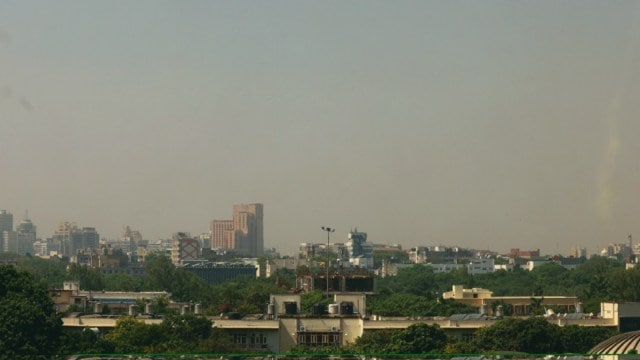Delhi sees zero ‘severe’ air days since Jan: Experts explain why this is good — and bad
With an AQI of 119 (moderate) on Wednesday, the city saw its cleanest air since September 29 last year when it was 76 in the ‘satisfactory’ category. On Thursday, the air remained ‘moderate’ at 124.
 Delhi’s minimum temperature was recorded at 15.5 degrees Celsius on Saturday (File photo)
Delhi’s minimum temperature was recorded at 15.5 degrees Celsius on Saturday (File photo)
Strong winds from the snow-clad mountains over the northwest plains for three days in a row not only improved Delhi’s air quality, but also led to below-normal temperatures.
With an AQI of 119 (moderate) on Wednesday, the city saw its cleanest air since September 29 last year when it was 76 in the ‘satisfactory’ category. On Thursday, the air remained ‘moderate’ at 124.
This year, from January to March 6, there have been zero ‘severe’ air days, 18 ‘very poor’ air days, 27 ‘poor’ air days and 20 ‘moderate’ air days. An official from the Commission of Air Quality Management, who did not wish to be named, said, “Data shows this is the fastest rate of recovery in terms of air quality improvement, especially after mid-February, at least since 2023… In January, too, the recovery rate was better than previous years.”
The average AQI of 121 for Delhi is the lowest during January to February in the last three years since 2023. Delhi also reported its lowest monthly average AQI in February at 214, according to data from the Central Pollution Control Board (CPCB).
In the previous year, there were three ‘severe’, 31 ‘very poor’, 12 ‘poor’ air days and 20 ‘moderate’ air days reported in the capital from January 1 to March 6.
In the same period in 2023, there were 3 ‘severe’ air days, 20 ‘very poor’, 25 ‘poor’ air days and 17 ‘moderate’ air days.
There is, however, a flip side.
An official source said, “While long-term records of the CPCB show there has been a reduction in particulate matter concentration, this also has a flip side. The reduction in these aerosols leads to more radiation…, which leads to an increase in ozone levels. Western cities like San Francisco and Denver and European cities have cleaned their air from aerosols but struggle with this issue of high ozone levels, as all of this is interlinked. Delhi is also joining this direction, and it calls for a holistic approach… We need to control our VOCs (Volatile Organic Compounds).”
CPCB data reveals that the hourly average ozone concentration surpassed 90 µg/m³ for 37 hours this year. Ozone and PM 2.5 were the prominent pollutants on Thursday.
The expert added, “Skies will be clear, but there will be invisible pollution if we don’t have a multi-pronged approach… But the forecast for cloudy skies is positive as there won’t be much ozone production.”
The week ahead
In its seasonal outlook, the India Meteorological Department (IMD) had forecast above-normal temperatures and an above normal number of heatwave days over most parts of the country for the month of March. With the windy days coming to an end, the Met office has forecast a rise in temperatures reaching above normal for the next six days.
Delhi’s maximum temperature was 28.4 on Thursday, which is a notch above normal, while the minimum was a notch below normal at 12.2 degrees Celsius.
“A fresh western disturbance is likely to affect the Western Himalayan region from March 9…,” said the Met Office on Thursday. A gradual rise in maximum temperatures by 3 to 5 degrees Celsius is likely over the Northwest during the next four to five days, said the IMD.
A partly cloudy sky in the coming days also means that the temperatures will not rise significantly in Delhi. The Met Office has forecast the minimum to gradually increase from 13 degrees Celsius to 17 degrees Celsius by Wednesday. Meanwhile, the maximum will hover between 30 and 34 degrees Celsius. Mist conditions are forecast for the next six days.
The air quality is likely to be in the moderate category till Sunday. For the subsequent six days, it is expected to fluctuate between ‘moderate’ and ‘poor’, as per the forecast by the Indian Institute of Tropical Meteorology (IITM), Pune.












